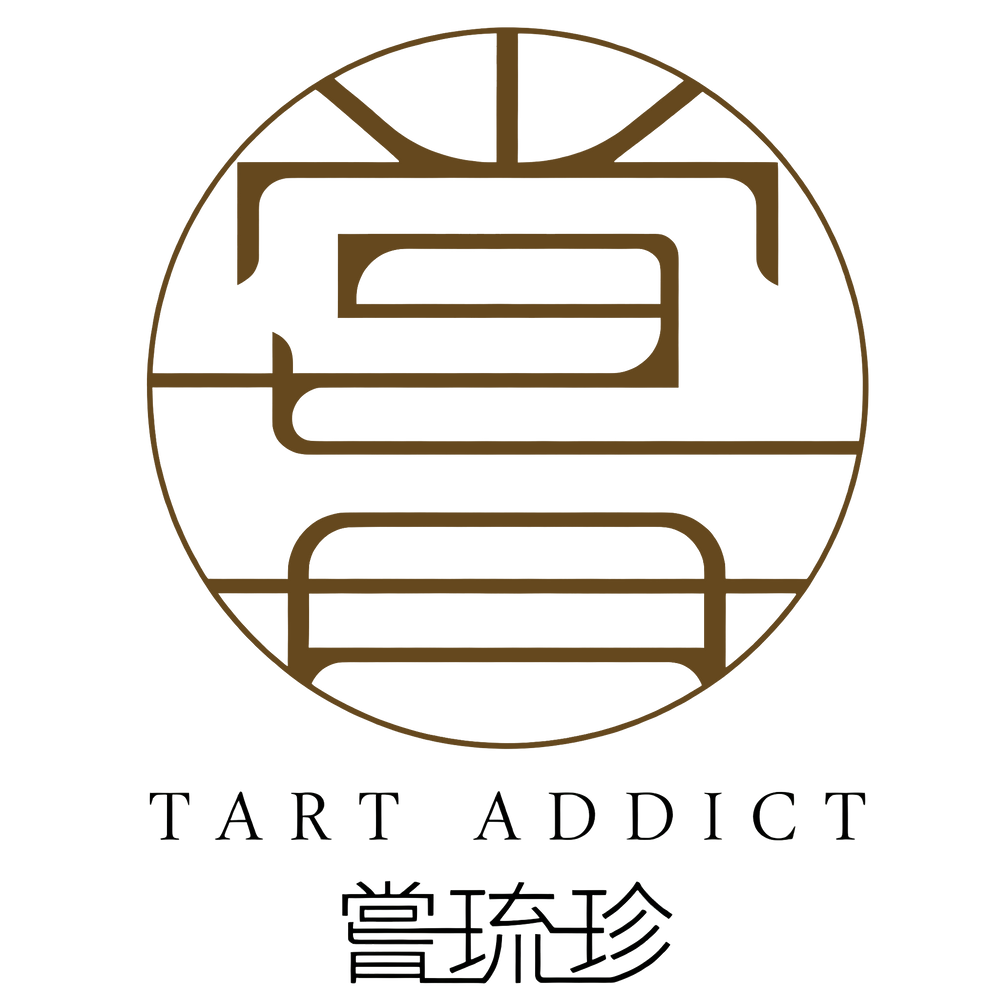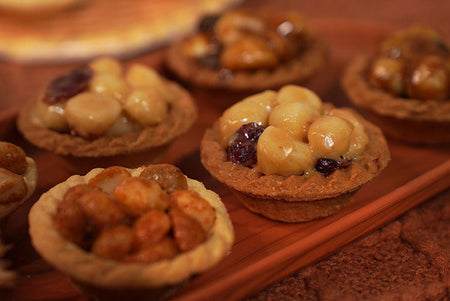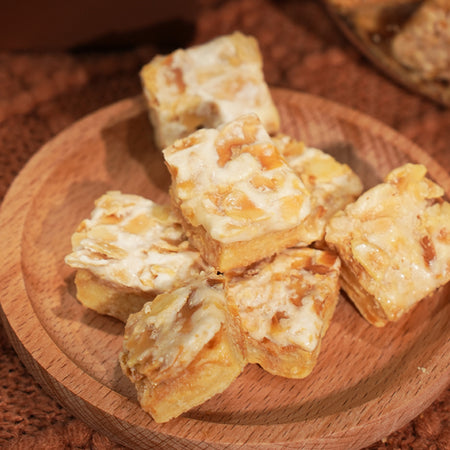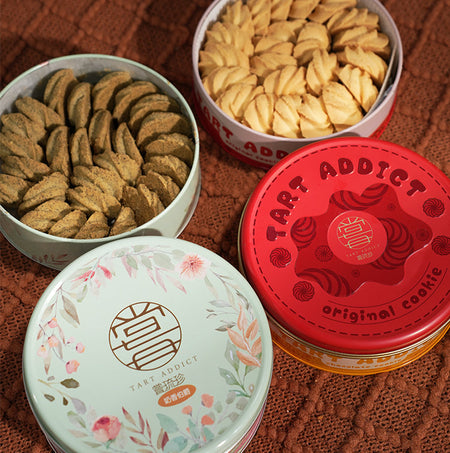Discovering the Origins of Handmade Macadamia Nut Tarts (手工夏威夷果仁豆塔)
2025年10月11日
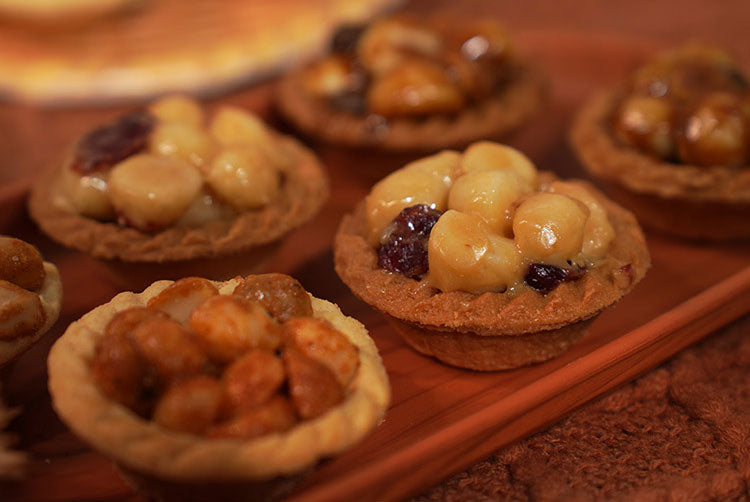
Crunchy, buttery, and lightly sweet, the handmade macadamia nut tart (手工夏威夷果仁豆塔) has delighted dessert lovers worldwide. But where does this beloved treat come from, and how did it become such a favorite at bakeries and tea tables alike? Let’s explore the fascinating background and origin of the handmade macadamia nut tart, from its roots to its present popularity.
The Heart of 夏威夷果仁豆塔: The Macadamia Nut
Macadamia nuts, the key ingredient in 夏威夷果仁豆塔, hold a surprisingly international story. Native to the northeastern coast of Australia, macadamia trees flourished long before the first tart was ever baked. Australian Indigenous peoples valued the macadamia for its rich, buttery texture and nutritional value; they called it ‘Kindal Kindal’ and savored it as a rare delicacy.
In the 19th century, European botanists recognized the potential of the macadamia, naming the genus after John Macadam, a Scottish-Australian chemist. Seeds made their way to Hawaii in the late 1800s, finding fertile volcanic soil perfect for cultivation. Hawaii soon became the global capital of macadamia agriculture, giving the nut its widely recognized name.
- Macadamia trees can take 7–10 years before nut production begins.
- The nut has a hard shell, requiring specialized tools to crack.
- Today, both Australia and Hawaii are major producers, with growing interest in Asia and Africa.
The Tart: From European Roots to Asian Innovation
While the macadamia’s journey is sweeping, the tart as a pastry comes from European baking traditions. French patisserie, in particular, gave rise to buttery, tender shortcrust foundations, designed to carry nuts, fruits, and creams. The beloved pecan pie in America or the French tarte aux noix (walnut tart) are examples of how nuts and pastry have mingled in dessert history.
In the 20th century, a globalizing world and the movement of ingredients led to new creations. As macadamia nuts became more widely available, inventive bakers sought to celebrate their uniquely rich flavor and silken crunch. Asian and Taiwanese bakeries experimented with western-style tarts, substituting European nuts with macadamia, and adjusting sugar levels for a more delicate, refined taste.
- Shortcrust pastry forms the crisp base of the tart.
- Macadamias are tossed in caramel, honey, or light syrup.
- The fusion blends French technique with Asian palate preferences.
The Birth of 手工夏威夷果仁豆塔
The specific confection—手工夏威夷果仁豆塔, or handmade macadamia nut tart—emerged most prominently in Taiwan and Hong Kong during the late 20th century. Bakeries there frequently adapted classic Western desserts using locally sourced or popular nuts. With macadamias gaining a reputation as a premium, luxurious nut, they quickly became a favorite for festive seasons and elegant gifting.
What sets these tarts apart is a focus on craftsmanship. The ‘handmade’ element is not simply a marketing phrase; it means care is taken to roast the nuts to golden perfection, caramelize them with just the right balance of sweetness, and pair them with fragrant, freshly baked pastry shells.
- Each tart is often filled by hand to ensure even nut distribution.
- Artisanal methods often avoid artificial flavors or preservatives.
- The result is a treat that showcases natural flavors and textures.
Summer, Festivity, and the Gift-Giving Tradition
Besides everyday enjoyment, 手工夏威夷果仁豆塔 is closely linked with special occasions. In East Asian culture, premium pastries are traditional gifts during Lunar New Year, Mid-Autumn Festival, and weddings. Giving macadamia nut tarts represents good fortune, gratitude, and a wish for sweetness in relationships.
Wicker boxes or elegant tins with delicately arranged tarts are prized gifts for hosts, business partners, and family gatherings. Their portability and shelf stability make them ideal for sharing across distances.
- Symbolizes prosperity and affection.
- Packaging often reflects cultural motifs, combining modern and traditional designs.
- Now commonly featured at dessert buffets, upscale cafes, and online gourmet stores.
Distinctive Features of Handmade 夏威夷果仁豆塔
While the macadamia nut tart exists in many forms, handmade varieties stand out for several reasons. The heart of the appeal lies in freshness and attention to small details.
- The pastry shell should be thin yet sturdy, with a melt-in-the-mouth crumb.
- Nuts are purchased and roasted in small batches to preserve their buttery aroma.
- Fillings can range from honey and maltose to brown sugar or even a touch of sea salt for balance.
- No two tarts are ever exactly the same, testament to their artisanal nature.
Cultural Adaptations and Modern Innovations
As the popularity of 夏威夷果仁豆塔 has grown, bakers around the globe have added new twists. In Japan, you may find a matcha-infused pastry base for subtle bitterness. Southeast Asian interpretations sometimes echo local favorites, adding coconut or dried fruit to the mix.
In recent years, health-conscious trends have led to the use of less refined sugars, and some vegan bakeries explore dairy-free alternatives without losing the tart’s signature charm. Creative bakers add a pinch of sea salt or even drizzle dark chocolate for complexity.
Classic vs. Contemporary Styles
- Classic tarts feature an all-butter pastry and glossy caramel glaze.
- Modern versions may add layers of flavor, like toasted black sesame or cranberry.
- Gift boxes increasingly pair tarts with gourmet teas or specialty coffees for a full tasting experience.
The 夏威夷果仁豆塔 Experience: A Sensory Journey
What makes the handmade macadamia nut tart a favorite? The charm lies in its textures and flavors—the brittle snap of the shell, the yielding crunch of the nut, and the mellow sweetness of caramel.
Enjoyed with tea or coffee, the tart is satisfying but never overwhelming. The blend of buttery pastry and gentle nutty notes leaves a lingering elegance. For many, the tart evokes memories of sharing, celebration, and the comfort of handmade treats.
- Crisp, nutty, and gentle in sweetness.
- Rich without being heavy, suitable for all ages.
- Evokes a sense of occasion, whether served at parties or gifted.
How to Choose a Quality 手工夏威夷果仁豆塔
With growing demand, it's important to know what distinguishes a truly excellent handmade macadamia nut tart.
- Look for visible whole or halved macadamias, a sign of quality ingredients.
- The caramel should glisten without being sticky or overly thick.
- The pastry should not taste oily or have a burnt edge.
- Artisanal varieties often use minimal preservatives for a fresher experience.
- Ingredients lists with only a handful of recognizable items are usually a good sign.
Conclusion
Handmade macadamia nut tarts (手工夏威夷果仁豆塔) blend tradition, craftsmanship, and irresistible flavor. Behind their simple elegance lies a journey across continents and cultures, ending in every sweet, nutty bite. Discover their story for yourself—and perhaps gift or savor one soon, celebrating life’s little joys.
